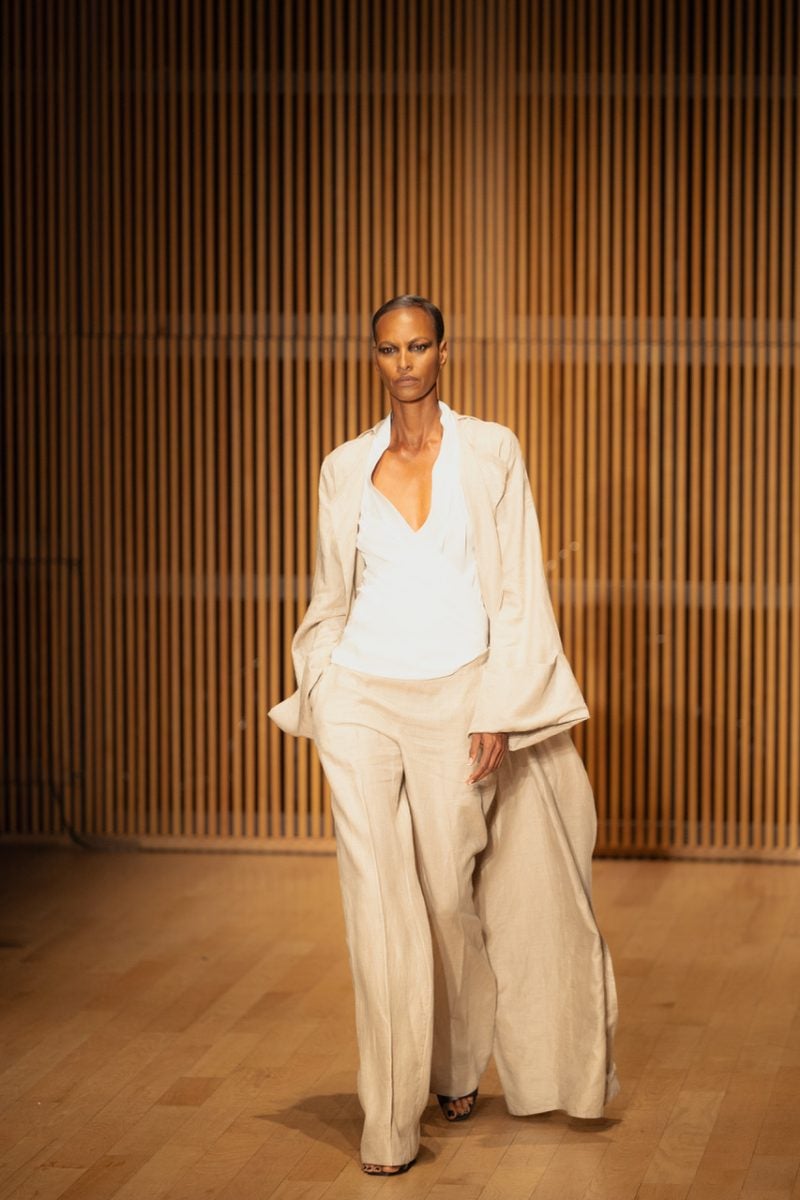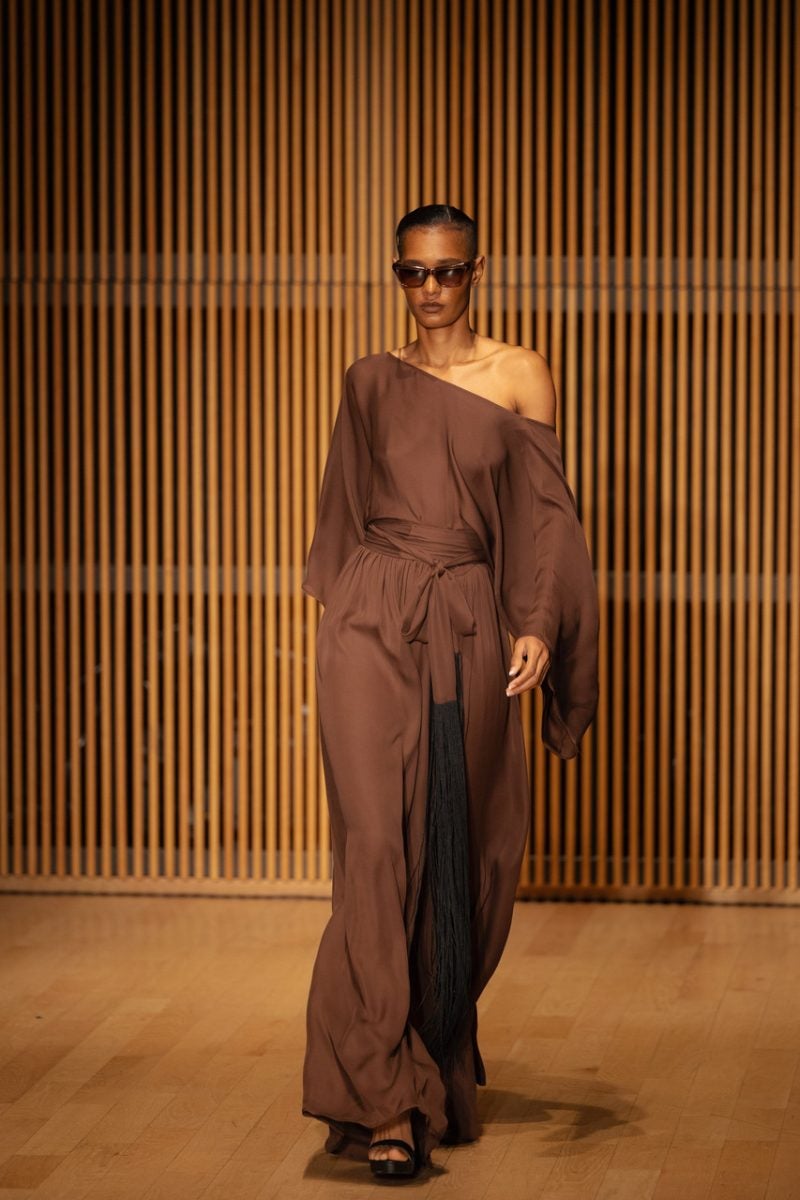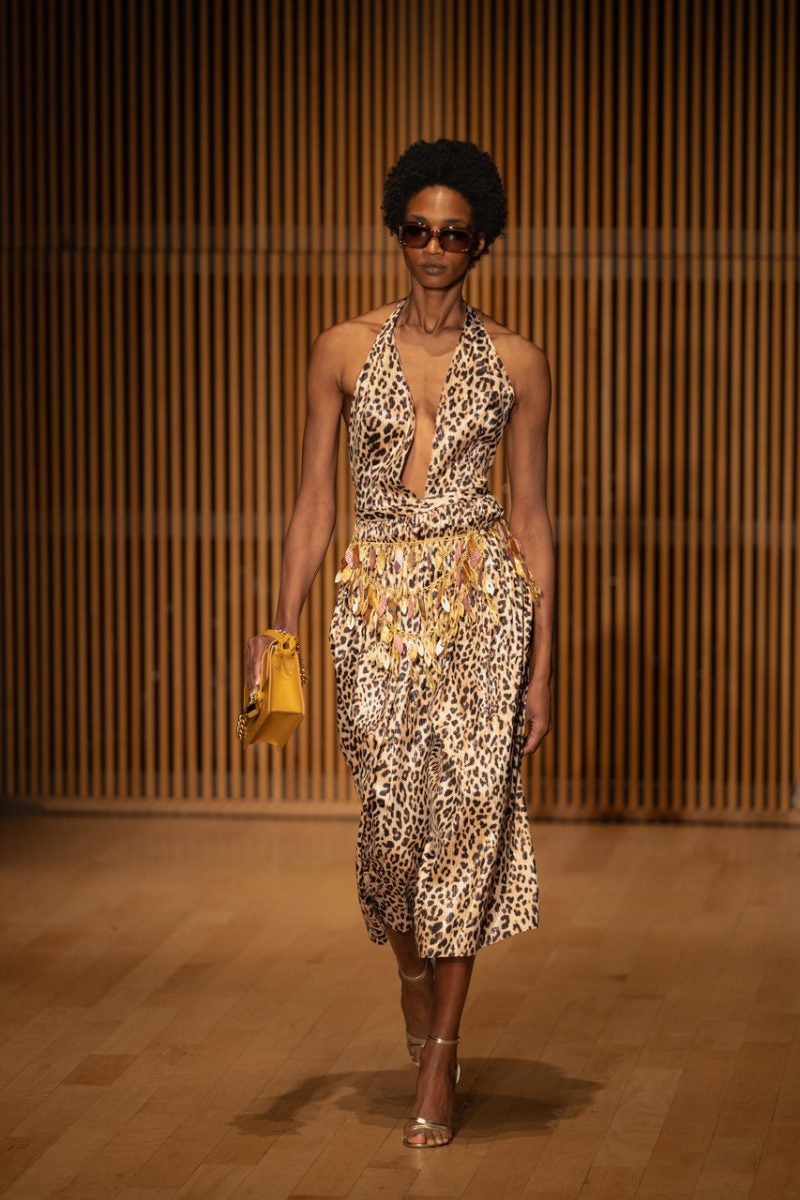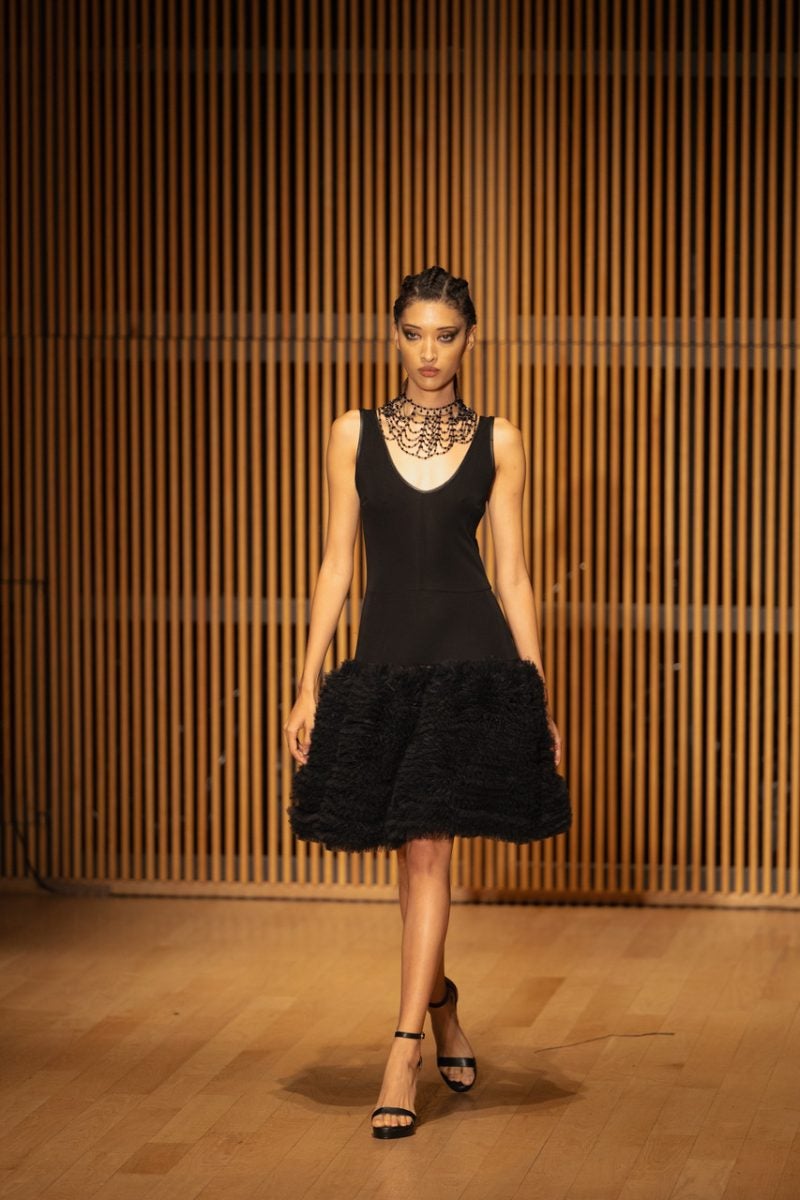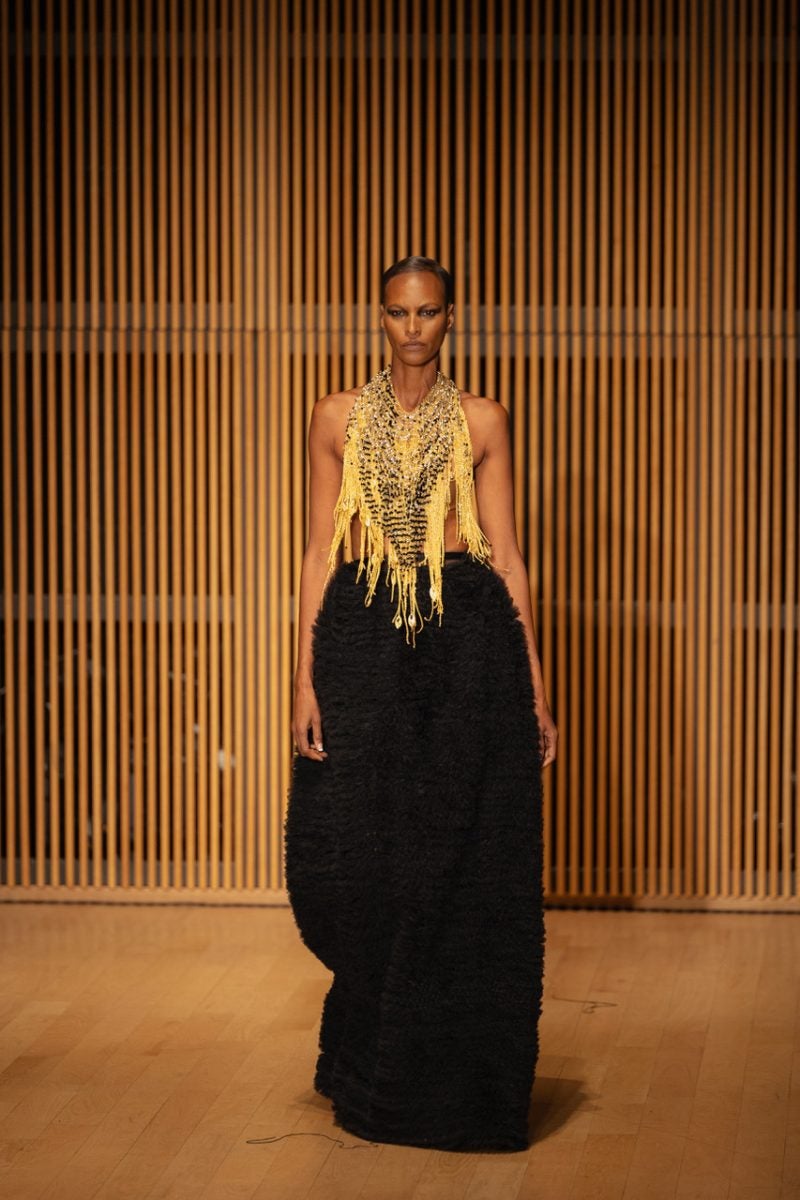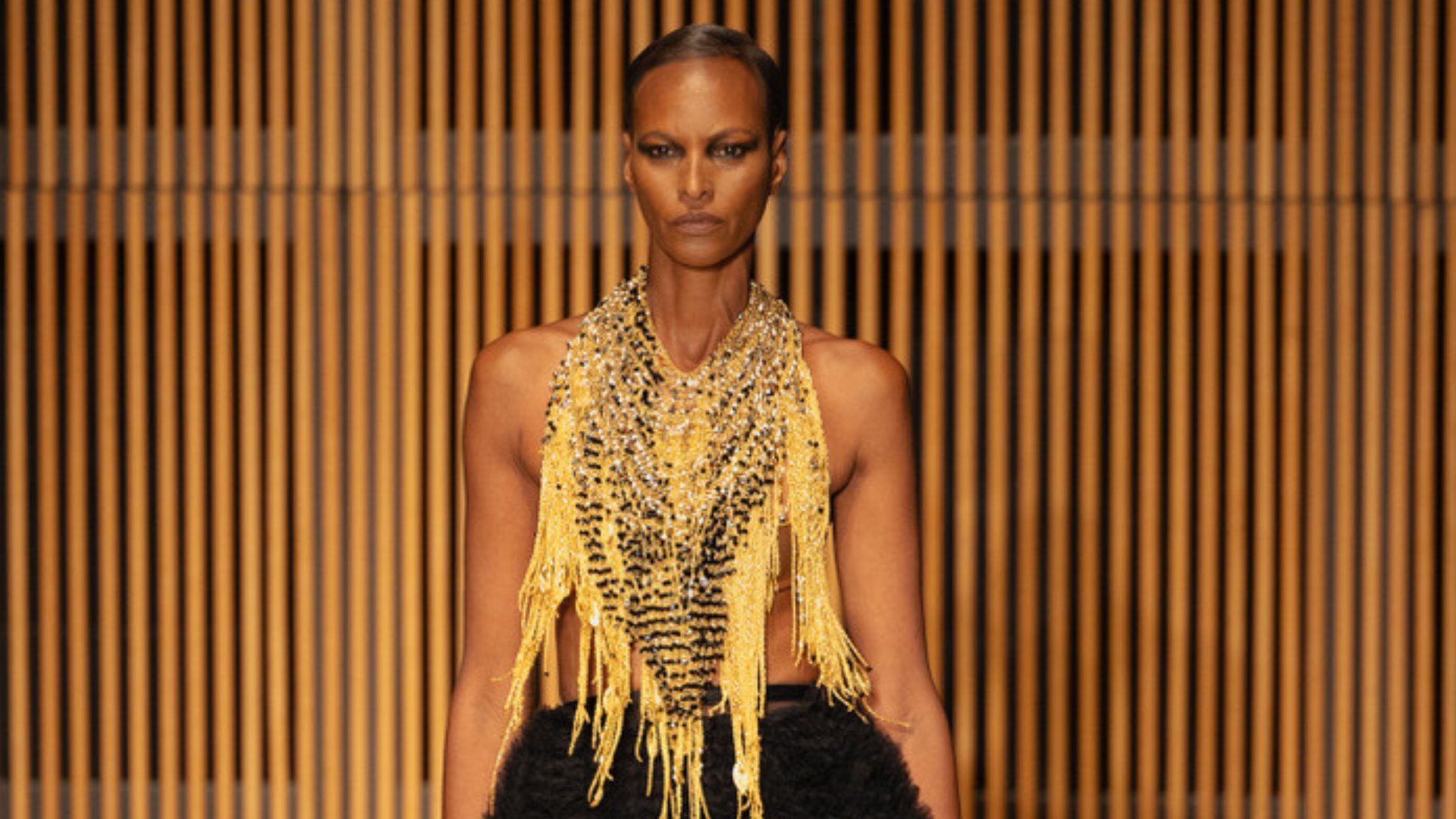
Renowned designer Frederick Anderson has continually evolved his creative axis through the timely reinterpretation of womenswear, mirroring globalist conversations with the experiences that inform his evolving creative practice. For years, he has utilized an element of African Diaspora as the motif through which he visualizes colorways, textures, and silhouettes, while also disclosing parts of himself with his attentive audiences. In his latest New York Fashion Week presentation, he revisited these familiar storytelling devices to share a Spring/Summer 2025 collection about motion and earth, and the interplay between the two. With nearly fifty looks of flowing gowns, jumpsuits, and separates, Anderson transports viewers to a musing on compatibility, invoking the scenes that inspired him during recent travels through the North African Maghreb (اَلْمَغْرِبُ الْعَرَبِيُّ) and the horn of the continent.
Inspired by the rich traditional dress of Northern Africa, Anderson’s latest offering presents an artistic homage to the kaftans, beading, and gilded threads of an oft-unsung frontier. He introduces us to his contemporary interpretation of an ancient veneer of civilization and artistry, creating city-ready pieces that capture the interplay of heat and the body’s natural grace. Beneath the wood vaulted ceilings of Midtown’s DiMenna Center for Classical Music, models teleported to the desert scenery so deeply impacted the tenured designer. In his introductory statement, Anderson conveyed his memory of the sartorial linkages he observed during travels through Morocco and Egypt. Tailoring features took inspiration from “French influences with robe and caftan dressing,” married with the chic modern luxuries found “during evenings, walking into the door of a riad.” The collection and show were immersive in ways that reflect the quiet intensity of a region rich with treasures both tangible and unseen.
Across runway pieces, flowing silhouettes mimic the natural architecture of wind-sculpted terrain, with several gowns echoing the fluidity of shifting sands. Colors ranged from sun-drenched neutrals—taupe and ochre linens—but there are flashes of terracottas before calming to Anderson’s familiar row of onyx pieces, closing the show. Textures ranged but collectively complimented a sense of second-skin effortlessness, tracing curves of the body and often revealing the wearer beneath through chantilly laces and cut-out detailing.
“I’m always showing skin and lace is part of my signature,” Frederick Anderson tells ESSENCE. “I think what you are feeling is the pulse of the connection to body and earth I wanted to emanate through the collection—a sexuality born from an internal connection to my homeland.”
Anderson made clear that he wanted to invert the assumptions of rural African provinciality, reintroducing this age-old region’s materiality with a cosmopolitan bend. Frederick Anderson doesn’t just borrow from tradition. He reinterprets it with a modern, poetic sensibility. The desert, with its vastness, its harsh beauty, and its hidden allure, serves as both inspiration and metaphor. The garments become an invitation to step into a visual dance of sun and sand, finding in them an elegance, and in the stillness, a quiet power.
This is a theme Anderson envisions making a larger statement across spring fashion, returning to boldness after what he calls a period of quiet luxury. “Spring will be post-election and we will be ready to get back to joy. I want women to assert their power in politics and dressing,” he adds.
